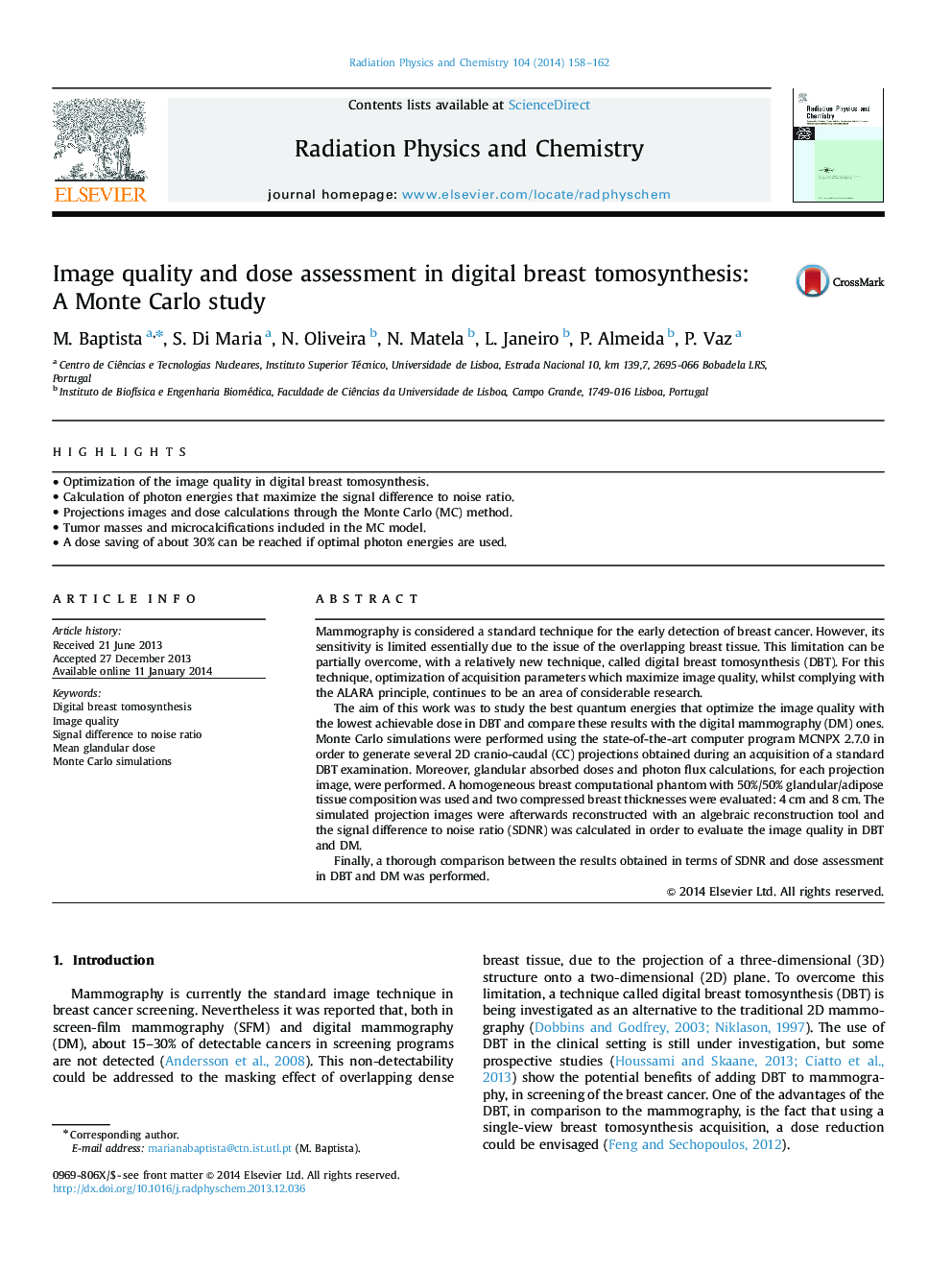| Article ID | Journal | Published Year | Pages | File Type |
|---|---|---|---|---|
| 1883370 | Radiation Physics and Chemistry | 2014 | 5 Pages |
•Optimization of the image quality in digital breast tomosynthesis.•Calculation of photon energies that maximize the signal difference to noise ratio.•Projections images and dose calculations through the Monte Carlo (MC) method.•Tumor masses and microcalcifications included in the MC model.•A dose saving of about 30% can be reached if optimal photon energies are used.
Mammography is considered a standard technique for the early detection of breast cancer. However, its sensitivity is limited essentially due to the issue of the overlapping breast tissue. This limitation can be partially overcome, with a relatively new technique, called digital breast tomosynthesis (DBT). For this technique, optimization of acquisition parameters which maximize image quality, whilst complying with the ALARA principle, continues to be an area of considerable research.The aim of this work was to study the best quantum energies that optimize the image quality with the lowest achievable dose in DBT and compare these results with the digital mammography (DM) ones. Monte Carlo simulations were performed using the state-of-the-art computer program MCNPX 2.7.0 in order to generate several 2D cranio-caudal (CC) projections obtained during an acquisition of a standard DBT examination. Moreover, glandular absorbed doses and photon flux calculations, for each projection image, were performed. A homogeneous breast computational phantom with 50%/50% glandular/adipose tissue composition was used and two compressed breast thicknesses were evaluated: 4 cm and 8 cm. The simulated projection images were afterwards reconstructed with an algebraic reconstruction tool and the signal difference to noise ratio (SDNR) was calculated in order to evaluate the image quality in DBT and DM.Finally, a thorough comparison between the results obtained in terms of SDNR and dose assessment in DBT and DM was performed.
